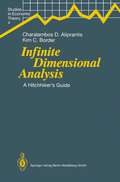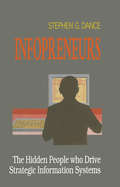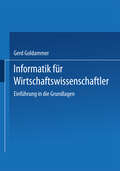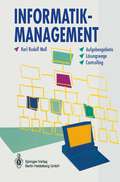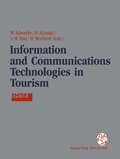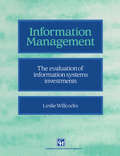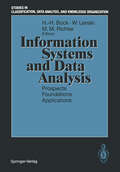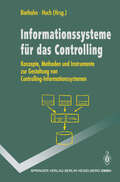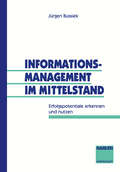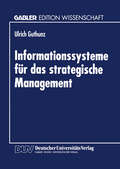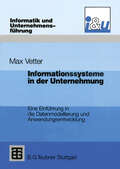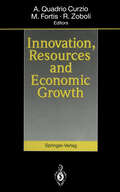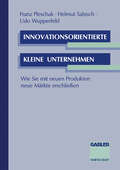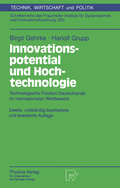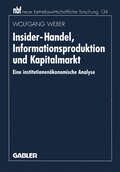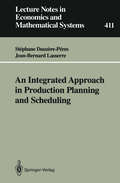- Table View
- List View
Industries, Firms, and Jobs
by George FarkasWhat are the links among industrial structure, segmentation, the internal structure of firms, job characteristics, technology, productivity, labor markets, and product markets? The answers, posited by a distinguished group of sociologists and economists, have gained resonance as the field of economic sociology has grown. In this expanded edition, the editors and their economist colleague, Kevin Lang, explore the theoretical interstices and update the references.Sociologists and economists have responded differently to work within the other discipline. For some sociologists, the typical economic assumption of basic actors engaged in rational action is both unrealistic and objectionable. Other sociologists have not always agreed with everything economists do, they have seen ""rational choice"" as a partially true description of human behavior and as a starting point for sociological theorizing. Among economists, the situation is quite different: most have maintained their basic rational choice model while pushing aggressively into substantive areas previously addressed only by sociologists and political scientists.Industries, Firms, and Jobs is a welcome reassertion of an old tradition of interdisciplinary research. That tradition has recently weakened, largely because of an enormous expansion of the domain of neoclassical economics. The expansion has fed on two scientific developments: human capital theory and contract theory. This book is an invaluable resource for all economists, sociologists, labor specialists, and business professionals.
Industries, Firms, and Jobs: Sociological And Economic Approaches (Springer Studies In Work And Industry Ser.)
by George Farkas Paula EnglandWhat are the links among industrial structure, segmentation, the internal structure of firms, job characteristics, technology, productivity, labor markets, and product markets? The answers, posited by a distinguished group of sociologists and economists, have gained resonance as the field of economic sociology has grown. In this expanded edition, the editors and their economist colleague, Kevin Lang, explore the theoretical interstices and update the references.Sociologists and economists have responded differently to work within the other discipline. For some sociologists, the typical economic assumption of basic actors engaged in rational action is both unrealistic and objectionable. Other sociologists have not always agreed with everything economists do, they have seen ""rational choice"" as a partially true description of human behavior and as a starting point for sociological theorizing. Among economists, the situation is quite different: most have maintained their basic rational choice model while pushing aggressively into substantive areas previously addressed only by sociologists and political scientists.Industries, Firms, and Jobs is a welcome reassertion of an old tradition of interdisciplinary research. That tradition has recently weakened, largely because of an enormous expansion of the domain of neoclassical economics. The expansion has fed on two scientific developments: human capital theory and contract theory. This book is an invaluable resource for all economists, sociologists, labor specialists, and business professionals.
Infinite Dimensional Analysis: A Hitchhiker’s Guide (Studies in Economic Theory #4)
by Charalambos D. Aliprantis Kim C. BorderThis text was born out of an advanced mathematical economics seminar at Caltech in 1989-90. We realized that the typical graduate student in mathematical economics has to be familiar with a vast amount of material that spans several traditional fields in mathematics. Much of the mate rial appears only in esoteric research monographs that are designed for specialists, not for the sort of generalist that our students need be. We hope that in a small way this text will make the material here accessible to a much broader audience. While our motivation is to present and orga nize the analytical foundations underlying modern economics and finance, this is a book of mathematics, not of economics. We mention applications to economics but present very few of them. They are there to convince economists that the material has so me relevance and to let mathematicians know that there are areas of application for these results. We feel that this text could be used for a course in analysis that would benefit math ematicians, engineers, and scientists. Most of the material we present is available elsewhere, but is scattered throughout a variety of sources and occasionally buried in obscurity. Some of our results are original (or more likely, independent rediscoveries). We have included some material that we cannot honestly say is neces sary to understand modern economic theory, but may yet prove useful in future research.
Infopreneurs: The Hidden People Who Drive Strategic Information Systems
by Stephen G. DanceInfopreneurs looks beyond and beneath the hyperbole that currently surrounds Information Technology. Analysing many case studies, the book establishes that none of the more widely publicised methods have managed to create one strategically significant system. The true key lies within people with unique skills and knowledge who can bring IT and business together. Infopreneurs shows managers how to find these individuals in their organisation and how to facilitate their efforts and deploy their unique skills.
Informatik-Management: Aufgabengebiete - Lösungswege - Controlling
by Karl-Rudolf MollDie Bereitstellung effizienter EDV-Systeme ist für viele Großunternehmen wie z.B. Automobilhersteller, Banken und Versicherungen zu einem wichtigen Erfolgsfaktor geworden. Informatik-Management umfaßt alle in diesem Zusammenhang notwendigen operativen Aufgabengebiete wie Entwicklung und Wartung, Schulung und Beratung, Planung, Kontrolle und Stabsaufgaben sowie Betrieb von EDV-Systemen. Schwerpunkt des Buches ist die Darstellung der Management-Aspekte dieser Aufgabengebiete, gegliedert in Aufgaben und Ziele, Erfolgsfaktoren, Lösungswege und deren Konstruktionsprinzipien, Aufbauorganisation und Methoden für wirksames Controlling einschließlich Kennzahlen. Als Randergebnisse werden Informatik-spezifische Arbeitsplätze und deren Anforderungsprofile dargestellt sowie offene Fragen für die Wissenschaft und für Hersteller von Informatik-Produkten aufgezeigt.
Information and Communication in Economics (Recent Economic Thought #32)
by Robert E. BabeAlthough there is a burgeoning interest among economists in `information economics', much of the literature adopts a reductionist conceptualization of information, defining it exclusively as reduction in uncertainty, exploring the implications of imperfect information on markets. This neoclassical treatment obscures major interrelations between economic and communicatory processes. Drawing on a range of distinguished scholarship from both the economic and communication studies disciplines, Information and Communication in Economics explores the implications for economic analysis and our understanding of economic processes of employing a more complete conceptualization of information: information as locus of power; information as evolutionary agent; and media systems as devices for control.
Information and Communications Technologies in Tourism: Proceedings of the International Conference in Innsbruck, Austria, 1994
by Walter Schertler Beat Schmid A. Min Tjoa Hannes WerthnerThe conference ENTER • International Conference on However, the tourist market has several specific characteristics Information and Communications Technologies in Tourism with regard to the use of technological infrastructure: represents a fll'St attempt • On the demand side computerized reservation and general • to provide an international forum for the discussion of the distribution systems (eRS and GDS), managed by big role of telecommunication and information systems in airlines, are well organized and technological pioneers. In tourism, the past they typically focused on the business traveller, • to inform potential users and people concerned with the nowadays they also try to cover the vacation sector. These importance of such technologies and to explain their systems work on a world-wide level and are highly functioning sophisticated. However, it should be added that the • to give an opportunity to the research community, nowadays information provided is rather poor and also selective, scattered into different areas of research, to discuss their which may restrict its usefulness for the promotion of an results on a common platform, and, fmally, entire tourist region. • to intensify the contact and the communication between • Similar to CRSlGDS several tour operators have begun to develop their own systems, although with varying success. researchers, system developers and users.
Information management: The evaluation of information systems investments
by Leslie WillcocksSurvey and study background In an effort to gain some answers on the 1ST capital investment (project selection) decision criteria used in practice, a survey was undertaken in 1990 of 80 American, British, Australian and New Zealand companies. A one-page survey form was used that provided 15 possible 1ST investment criteria, a means of indicating whether they are used or not, the percentage of projects to which each criterion is applied, and an overall ranking in terms of total project value for each criterion. The criteria are shown in Table 2.1. The criteria are categorized into financial, management, and development criteria. They were developed, first, through interviews with some 20 chief information officers (CIOs) in Britain and the United States. These CIOs were questioned on what criteria their organizations use in selecting 1ST investment projects, with the aim of developing a full list of the criteria used in practice. Secondly, the criteria and the form were tested and refined in a pilot study with some 12 companies. The criteria used in the survey and listed in Table 2.1 are primary level criteria.
Information Systems and Data Analysis: Prospects — Foundations — Applications (Studies in Classification, Data Analysis, and Knowledge Organization)
by Hans Hermann Bock Wolfgang Lenski Michael M. RichterProceedings of the 17th Annual Conference of the Gesellschaft für Klassifikation e.V., University of Kaiserslautern, March 3 - 5, 1993
Informations-systeme für das Controlling: Konzepte, Methoden und Instrumente zur Gestaltung von Controlling-Informations-systemen (Springer-Lehrbuch)
by Jörg Biethahn Burkard HuchIn diesem Buch werden Konzepte, Methoden und Instrumente von Informationssystemen für das Controlling dargelegt: Ein ganzheitlich zu konzipierendes Informationssystem ist neben dem Planungs- und Kontrollsystem das wichtigste Instrument des Controlling. Controlling-Informationssysteme werden hinsichtllich Begriff, Funktionen und Struktur aufgezeigt, wobei Informationssysteme selbst Objekt des Controlling sind. Dabei geht es um mehr als die Minimierung der Kosten der Informationsversorgung, wenn sowohl aus operativer als auch aus strategischer Sicht das Informationssystem als Erfolgsfaktor zu optimieren ist. Informationssysteme bedürfen des konzeptionellen Entwurfs und der konkreten Umsetzung. Deshalb werden Datenbanksysteme und -modelle sowie Entwurfsmethoden zur Konzeption von Informationssystemen dargelegt, wobei neue Ansätze - wie objektorientierte Analyse und objektorientiertes Design von Informationssystemen - berücksichtigt werden. Schließlich werden Programmier- und Planungssprachen, Tabellenkalkulationssysteme sowie FIS-Generatoren und KI-Entwicklungsumgebungen als Werkzeuge zur Entwicklung von Controlling-Informationssystemen diskutiert. Diesen konzeptionellen Darlegungen schließen sich Anwenderberichte aus den Häusern Bertelsmann, Krupp, Hoesch und Varta an, um unterschiedliche Entwicklungen aufzuzeigen.
Informationsmanagement im Mittelstand: Erfolgspotentiale erkennen und nutzen
by Jürgen BussiekSchlechte Informationspolitik ist nicht nur das Problem der Großen. Gerade Klein- und Mittelunternehmen können ihre generellen Vorteile mit effizientem Informationsmanagement noch unterstützen und Potentiale für sich gewinnen, die sonst brachliegen würden.
Informationssysteme für das strategische Management: Eine Untersuchung zur theoretischen Fundierung und Gestaltung strategischer Informationssysteme am Beispiel der Kostenrechnung
by Ulrich GuthunzInformationssysteme werden vorwiegend aus der Sicht der technischen Machbarkeit thematisiert. Ulrich Guthunz erarbeitet ein Verständnis strategischer Informationssysteme, das sich am Informationsbedarf orientiert.
Informationssysteme in der Unternehmung: Eine Einführung in die Datenmodellierung und Anwendungsentwicklung (Informatik und Unternehmensführung)
by Max VetterInnovation, Resources and Economic Growth
by Alberto Quadrio Curzio Marco Fortis Roberto ZoboliThe analysis of the interactions between natural resource scarcity, technological innovation and the dynamics of eco- nomic systems has a long-standing tradition in economics. During the 1980s and the early 1990s, a new phase of these interactions initiated under the effects of technological revolution and the problem of the environment. The general concept behind this book is that the issue of natural resou- cesand the environment in relation to economic growth can- not be addressed without due consideration for the effects of technological innovation on thedynamics of economic sy- stems. Technological innovation alone, however, is not a sufficient condition for the sustainability of economic growth. Policies may have a role in solving the internatio- nal distribution problems generated by the non-converging development path of developed and developing countries. In particular, the new international order shaped by the events of the 1980s, made it possible for world management to ad- dress the problems of poverty and the environment.
Innovationsorientierte kleine Unternehmen: Wie Sie mit neuen Produkten neue Märkte erschließen
by Franz Pleschak Helmut Sabisch Udo WupperfeldInnovationspotential und Hochtechnologie: Technologische Position Deutschlands im internationalen Wettbewerb (Technik, Wirtschaft und Politik #8)
by Birgit Gehrke Hariolf GruppDieses Buch stellt umfangreiche empirische Analysen zur Entwicklung der internationalen Wettbewerbsposition in der Bundesrepublik Deutschland (mit neuen Bundesländern) und in anderen Industrieländern dar. Die Untersuchungen erfolgen auf der Grundlage einer von den Autoren erarbeiteten Liste technologieintensiver Waren, die auf dem seit 1988 gültigen internationalen Warenverzeichnis für den Außenhandel beruht. Es werden u.a. angesprochen die Position der Bundesrepublik Deutschland im Preis- und Kostenwettbewerb, die Entwicklung der Welthandelsanteile, die Struktur und die Trends der Außenhandelsergebnisse nach Branchen- und Gütergruppen, die Position im Handel mit forschungsintensiven Waren, die Dynamik und Verflechtung industrieller Forschung und Entwicklung, die Patentieraktivität und Struktur der Patente.
Innovative Technologiepolitik: Optionen sozialverträglicher Technikgestaltung mit einer Fallstudien über Österreich (Reihe Politikwissenschaft)
by Renate Martinsen Josef MelchiorInsider-Handel, Informationsproduktion und Kapitalmarkt: Eine institutionenökonomische Analyse (neue betriebswirtschaftliche forschung (nbf) #131)
by Wolfgang WeberAuf der Grundlage der ökonomischen Theorie zur Informationsproduktion und -nutzung untersucht Wolfgang Weber die Auswirkungen des Insider-Handels auf den Kapitalmarkt, das Kalkül seiner Teilnehmer und das Investitionsniveau.
Institutional Change: Theory and Empirical Findings
by Sven-Erik SjostrandThis book brings together some 15 papers drawn from the 330 papers presented at the Third Annual Conference of the Society for the Advancement of Socio-Economics in Stockholm, Sweden in June 1991. Part 1 outlines a basic theory of institutional change; Parts 2 and 3 examine case studies in international experience with institutional change. The authors of the original papers include Douglas North, Amitai Etzioni, Oliver Williamson, as well as eminent scholars from Eastern and Western Europe, representing views and analyses from ten different countries.
Institutional Change: Theory and Empirical Findings
by Sven-Erik SjostrandThis book brings together some 15 papers drawn from the 330 papers presented at the Third Annual Conference of the Society for the Advancement of Socio-Economics in Stockholm, Sweden in June 1991. Part 1 outlines a basic theory of institutional change; Parts 2 and 3 examine case studies in international experience with institutional change. The authors of the original papers include Douglas North, Amitai Etzioni, Oliver Williamson, as well as eminent scholars from Eastern and Western Europe, representing views and analyses from ten different countries.
Insurance, Risk Management, and Public Policy: Essays in Memory of Robert I. Mehr (Huebner International Series on Risk, Insurance and Economic Security #18)
by Sandra G. Gustavson Scott E. HarringtonFive years ago the world lost one of its most prolific insurance scholars, Dr. Robert I. Mehr. His death in 1988 signalled the passing of not only a gifted writer and researcher, but also a pioneering teacher, mentor, and friend. The essays compiled within this volume are intended as an appropriate tribute to this occasionally outrageous individual who touched the lives of so many within the insurance community. Bob Mehr was a teacher who expected and demanded nothing less than perfect scholarship and flawless, efficient writing. Among alumni of the University of lllinois insurance doctoral program, stories still abound of late night and early morning sessions in which students and professor painstakingly debated precise words and phrases for dissertations, journal articles, and textbooks. Bob's respect for language was both immense and contagious, if at times more than a little compulsive. He joked that he could not read letters or novels without pencil in hand for editing. Bob's respect for his doctoral students was equally evident. The confidence he displayed in his students' abilities was sometimes startling, but "competence assumed" often begot "competence in fact." The accomplishments and records amassed by the many who studied with Bob Mehr are impressive and ongoing. On the dedication page in his final textbook, Fundamentals of Insurance, Bob spoke of his affection for those he called his "academic progeny" and wished them happiness as they build their own academic families.
An Integrated Approach in Production Planning and Scheduling (Lecture Notes in Economics and Mathematical Systems #411)
by Stephane Dauzere-Peres Jean-Bernard LasserreProduction Management is a large field concerned with all the aspects related to production, from the very bottom decisions at the machine level, to the top-level strategic decisicns. In this book, we are concerned with production planning and scheduling aspects. Traditional production planning methodologies are based on a now widely ac cepted hierarchical decom?osition into several planning decision levels. The higher in the hierarchy, the more aggregate are the models and the more important are the decisions. In this book, we only consider the last two decision levels in the hierarchy, namely, the mid-term (or tacticaQ planning level and the short-term (or operationaQ scheduling level. In the literature and in practice, the decisions are taken in sequence and in a top-down approach from the highest level in the hierarchy to the bottom level. The decisions taken at some level in the hierarchy are constrained by those already taken at upper levels and in turn, must translate into feasible objectives for the next lower levels in the hierarchy. It is a common sense remark to say that the whole hierarchical decision process is coherent if the interactions between different levels in the hierarchy are taken into account so that a decision taken at some level in the hierarchy translates into a feasible objective for the next decision level in the hierarchy. However, and surpris ingly enough, this crucial consistency issue is rarely investigated and few results are available in the literature.
Integration der Betriebskosten in das Risikomanagement von Kreditinstituten (Schriftenreihe des Instituts für Kredit- und Finanzwirtschaft #18)
by Michael SchulteAuf der Basis eines umfassenden Risk-Management-Konzeptes erarbeitet Michael Schulte Ansatzpunkte zur Messung und Bewertung, aber auch zur Steuerung der mit den Betriebskosten verbundenen Risikowirkungen.

